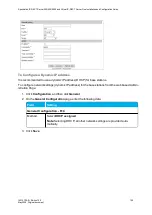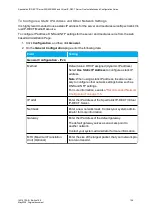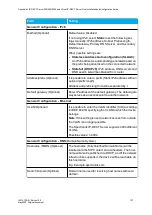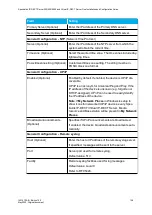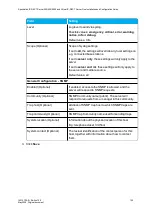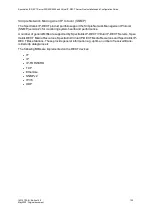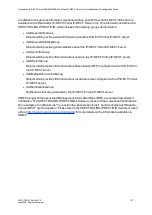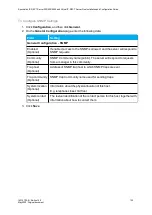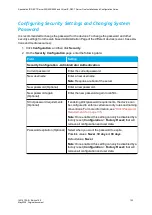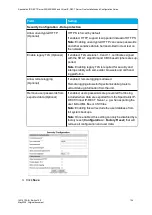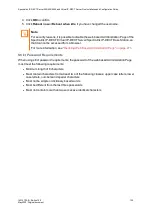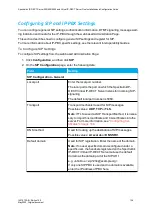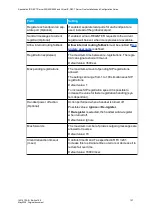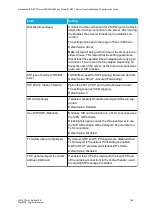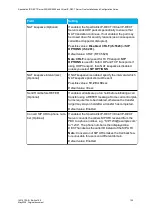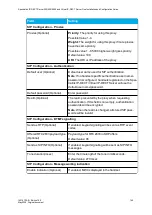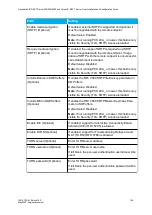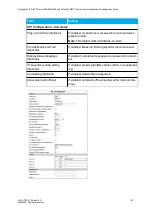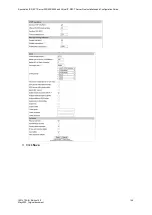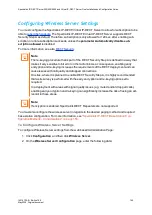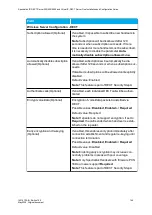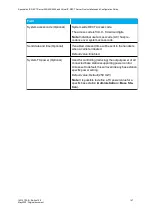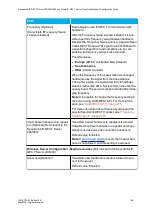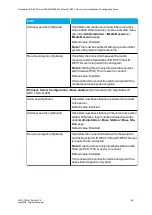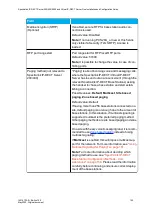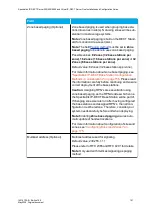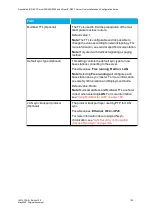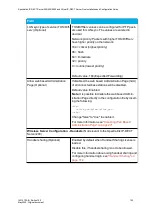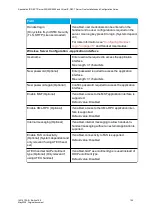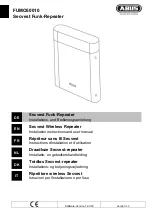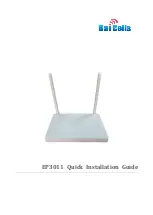
14215700-IG, Edition 15.0
May 2020, Original document
139
Field
Setting
NAT keepalive (Optional)
If enabled, the Spectralink IP-DECT/Virtual IP-DECT
Server sends UDP packets periodically to ensure that
NAT translation continues. If not enabled, the port may
be closed down for security reasons (as a consequence
call will be dropped or disrupted).
Possible values:
Disabled
,
CRLF (rfc5626)
or
SIP
OPTIONS (rfc3261)
.
Default value: CRLF (RFC 5626)
Note
:
CRLF
is only used for TCP transport.
SIP
OPTIONS
is used for both UDP and TCP transports. If
using UDP transport, then NAT keepalive is disabled
unless you select
SIP OPTIONS
.
NAT keepalive interval(sec)
(Optional)
If NAT keepalive is enabled, specify the interval at which
NAT keepalive packets must be sent.
Possible values:
10
,
20
or
30
sec
Default value: 30 sec
Send Hold before REFER
(Optional)
If enabled, all calls are put on hold before initiating a call
transfer using a REFER message. Some call control plat-
forms require this to be disabled, otherwise the transfer
target may stay on hold after a transfer has completed.
Default value: Enabled
Convert SIP URI to phone num-
ber (Optional)
If enabled, the Spectralink IP-DECT/Virtual IP-DECT
Server converts the callers SIP URI received from the
PBX to a phone number, e.g. “SIP:[email protected]”
to “1234”. The phone number is then displayed in a
DECT handset as the caller ID instead of the SIP URI.
Note
: Conversion of SIP URIs makes the Call back fea-
ture unusable for users on a different domain.
Default value: Enabled
Spectralink IP-DECT Server 200/400/6500 and Virtual IP-DECT Server One Installation and Configuration Guide

